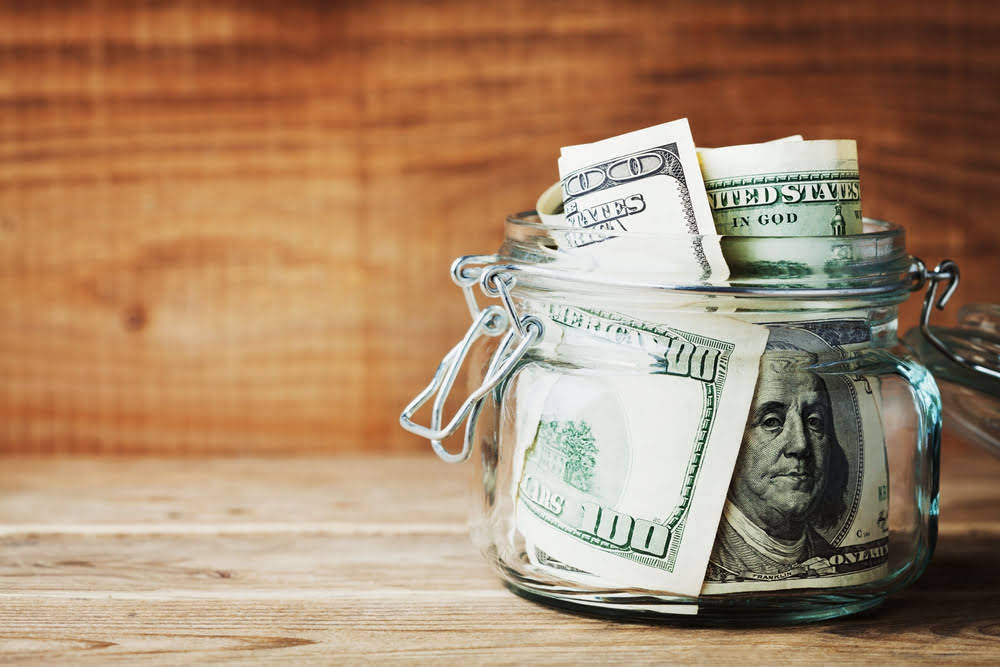Filling Out a Deposit Slip

If you’re depositing numerous items at once, use the back of your deposit slip or ask a bank employee for guidance. Most deposit slips have an extra set of boxes printed on the back so that you don’t have to fill in your personal information multiple times and deal with multiple subtotals. Deposit slips are pretty universal among financial institutions, and they’re there to help the bank establish a written record of deposits and withdrawals done throughout the day. If you have a combination of cash and checks or multiple checks to deposit simultaneously at a branch, a deposit slip can be a way to get it done in one fell swoop. The steps for filling out a deposit slip for depositing cash are similar to those for depositing a check. You must include the amount in the boxes designated for cash deposits when depositing cash.

Get up to $300 when you bank with SoFi.

Deposit slips are a small form of paper that a bank or credit union customer fills out when depositing funds into their account. If the client uses a deposit slip at the bank, the account number must be written in the designated area at the bottom of the slip. The deposit slip provides the teller with the bank account number that should receive the funds. If you’re making a remote deposit with your mobile device, you typically don’t need to use a deposit slip. At most banks, you’re already logged into your account when you snap a photo of the check, so you don’t need to provide those details.
Provide Personal Information
Typically, it contains the date, depositor name, and the receiving account number. There’s space for the deposit amount and the breakdown of cash or checks to be paid in. Deposit slips also offer the facility to draw back some cash from deposited checks. List the cash amount of any deposit and, if required, the breakdown of the currency in coins and bills. Fortunately, most deposit slips are quite similar, and the process is simple. Finally, sign the deposit slip if you want to get any cash back from your deposit.
When Are Deposited Funds Available for Use?
- Remember to double-check the amounts you write for both cash and checks to ensure accuracy.
- If you don’t have any checks to deposit, leave this part of the deposit slip blank.
- However, mobile deposits have strict deposit limits on the size and amount of checks you can deposit.
- Banks use them to help maintain a written ledger of funds deposited throughout the day and to ensure that no deposits are unaccounted for at the end of the business day.
- Initially, the process might seem a bit tricky, but once you get the hang of it, you will have an easier time filling out the form.
For bank customers, a deposit slip serves as a de facto receipt that the bank properly accounted for the funds and deposited the correct amount and into the correct account. The slip also breaks down whether the deposit is comprised of checks, cash, or if the depositor wants a specific amount of cash back from a check deposit. The bank clerk typically verifies the funds received for the deposit against the amounts listed on the deposit slip to ensure they match. The teller processes the slip along with the items in the deposit and prints a receipt for the customer. Deposit slips are often a basic part of banking, but you may not know how to use them in this era of online financial accounts.
- The bank keeps the original deposit slip and typically gives you a receipt from the transaction.
- The bank clerk will typically verify the funds deposited against the amounts listed on your deposit slip to ensure the figures match.
- Finally, sign the deposit slip if you want to get any cash back from your deposit.
- Banks are required by federal law to keep records of deposits exceeding $100 for at least five years.
- Read our reviews on Quickbooks Checks and Deposit Slips and VistaPrint Checks and Deposit Slips for two great places to order deposit slips.
- You may be able to list more checks on the back of a deposit slip if you run out of slots in the front.

Deposit slips can also be called deposit tickets and depending on the bank, their designs may differ. A routing number is made up of nine digits that identify your bank to other banks. It will typically be printed on deposit slips that come with your checkbook and it may even appear on blank deposit slips that you can pick up at your bank. These have the customer’s account number and the bank routing number pre-printed on them so there’s no need to fill out one of the blank slips provided by the banking institution. Mistakes can lead to discrepancies in your account balance or delays in processing your deposit. Take your time to verify the calculations to ensure that the cash totals are correctly recorded on the deposit slip.
Write down how much cash back you’d like to receive from the transaction, if any, in the space marked “Less Cash” (or similar). If you’d like to learn more about checks, check out our in-depth interview with Gina D’Amore. Customers can request a copy of their deposit if necessary, including the itemized amounts that made up the total deposit if there’s a dispute with the bank. Add up the total of the checks from the reverse side of the slip and carry it forward to the front in the designated check area. It’s not always easy to find out how to get the slip right so that the bank accepts it straight away.
They can be used to make deposits both in the lobby and in the bank’s drive-through lane. In addition, some older ATMs require customers to use a deposit slip when depositing cash or checks. It’s important to note that some banks provide pre-filled deposit slips with how to write a deposit slip your account details. In such cases, double-check the information to ensure its accuracy and make any necessary updates or corrections. The completed deposit slip is given to the bank teller along with the cheques, banknotes, and coins listed on the form in a bundle.
Benefits Of Deposit Slips
In addition, signing the back of each check is essential before depositing it in your account. There is a space on the back of checks at the top for your signature. The space is typically labeled ‘endorse here’ for the check recipient (that’s you) to sign. Doing so is part of properly managing your checking account; not doing so could lead to delays in the money becoming available.
Check Deposit Details
- Fortunately, the process is easy, and the basic steps appear below.
- When you are depositing money into your account through the bank’s mobile app, you do not have to fill out a deposit slip.
- However, if there are no additional boxes at the back of the slip, you can ask a bank employee to guide you.
- For example, if you have a $20 bill and a quarter, you’ll write your deposit as a cash deposit of $20.25.
- You typically only need to sign a deposit slip when you want cash back from your deposit.
While we are independent, the offers that appear on this site are from companies from which finder.com receives compensation. We may receive compensation from our partners for placement of their products or services. We may also receive compensation if you click on certain links posted on our site. While compensation arrangements may affect the order, position or placement of product information, it doesn’t influence our assessment of those products. Please don’t interpret the order in which products appear on our Site as any endorsement or recommendation from us.